Academy P-38M Nightmare…er, Night Lightning (or) the P-38M in Japan and Why It Matters to Me
Warning: This is a lengthier than usual post, so read on at your own peril.
History of the Bird
The P-38M captured my imagination some time ago, and I decided this point in my return to modeling was my chance to act. In fact, my digging around as I embarked on Academy's 1:48 Night Lighting kit was what led me to iModeler in the first place (thanks, Chuck http://imodeler.com/2017/02/academy-148-lockheed-p-38m-night-lightning-usaaf/).
I did some research and found that about 80 late model P-38s were converted to the radar-equipped M-version. Most of these were converted stateside and it doesn't appear that any of these planes made it overseas, as the war ended too soon. But the record shows that some Lightnings were field converted in the Pacific theater of war, and later saw duty as part of the occupation force in Japan. My rendering of the P-38M represents a Night Lightning of the 418th Night Fighter Squadron. According to the written history of the 418th (http://417th-nightfighters.com/wp-content/uploads/2014/11/History418NFS.pdf), radar-equipped P-38s had their genesis in this very squadron in February, 1944 while it was stationed at Dobodura in western Papua New Guinea (one Lt. Richardson and a skilled radar mechanic were awarded the Legion of Merit for their work); up to this point the squadron had had to use searchlights to make their P-38s effective at night. But note, this earliest version of a true P-38 night fighter was not the M-version Night Lightning shown here. The M version, notably with the rear cockpit for the radar operator, came over a year later as pilots realized they needed someone else to handle the sophisticated equipment while they closed in for the kill.
Early in 1946 (probably January), the 418th received four P-38M's that had been converted from L's in the Philippines then flown to the squadron's home at Atsugi Airbase (southwest of Tokyo on Honshu). When the 418th was transferred back to Okinawa in early March, the Night Lightnings stayed in Japan, being transferred to the 421st NFS based at Itazuke, Kyushu (southern Japan). Apparently the higher ups judged that the Night Lightnings should remain in Japan as an important element of the occupation force while the more numerous P-61's (the bulk of the squadron's force) were let go.
The serial number (44-27000) on my Lightning represents a semi-fictional aircraft of this squadron. I say “semi-fictional” because although this serial number was indeed that of one of the converted P-38M's, I have no way of knowing all the call numbers of those assigned to this squadron (i.e., whether P-38M 44-27000 was actually one of them). The prefix “44-2 etc.” conforms to records of other P-38M's that served in the 418th NFS. Almost all of the kits I have seen represent P-38M #44-27234 or #44-27245 (“Shady Lady/Snooks”), and I wanted to mix things up a bit.
The Model
When I read David Leigh-Smith's remark about a P-38 fighting him tooth and nail (http://imodeler.com/2017/05/lightning-in-june/), I felt it. Frankly, this was one of those experiences where I asked myself more times than I could count what possessed me to embark on this odyssey so early in my apprenticeship. This is my fourth essay since re-entering the craft, my previous attempts being my P-51B and my A6M2 Rufe, both posted already (I haven't the courage to post my first in 35 years, an F4F Wildcat, after seeing all the masterworks here, especially in the Midway Build Group). All these are Tamiya kits. I felt that the P-38M would push me and develop my skills in respect to surface preparation and execution, blah blah.
Anyway, I don't know if my kit was just a lemon or whether I was in over my head. It's probably both. I wouldn't have made it through if I hadn't had the Academy P-38J in my stash which I cannibalized when I blew something or a part was bad in the M version kit. The joints fit poorly, parts didn't want to go together, the booms were warped, and I felt the Battle of the Seams would never end.
The nuts and bolts of it are that I decided from the beginning to do the plane landing gear up to capture the grace of the P-38 in flight (like a condor or an albatross, the Lighting is a bird that doesn't look nearly as good to me on the ground as in the air). I left off the drop tanks and rocket racks to replicate a Lightning on a local, non-wartime sortie. I stole the pilot and the radar operator from the Tamiya Mossie kit in my stash and painted them as closely as possible with American aircrew uniforms. Spinning rotors are by PropBlur; superchargers and their air intakes are Quickboost; Bare Metal Foil is around the superchargers. I used the Squadron canopy for the front (pilot) section of the cockpit; the rear is the stock piece from the kit (I did this because the Academy kit only comes in many pieces and it's just nuts getting a smooth look). I brush painted the entire plane with Windsor Newton professional Mars Black oil paint (using high quality sable brushes) to maintain control because with all the nooks and crannies on the finished plane I was afraid to orange peel the thing in spots trying to cover everything. I experimented with various paints and finishes (again, thanks P-38J—burp), and settled on that approach as the one that allowed me to correct things even as it gave me a very thin coat (long dry times, though). Truth be told, if someone put a gun to my head and made me do another I think I'd tweak my order of assembly a bit and go with lacquers, or at least test them fully before settling; the oil paint looks smooth enough with the clear overcoats but my perfectionism pushes me for smoother still. Future went on as a base for the decals. I had to use the insignia decals from the P-38J kit as overlays on top of the ones that came with the M kit because those were too bright a blue and the white wasn't opaque enough over the black. I printed my own decals to make the custom serial number and touched them up because they looked weak. After that Tamiya acrylic flat all over to make things uniform, and finally coats of Tamiya acrylic gloss until I was satisfied. I toned down the heavy gloss look for scale so essentially it's a semi-gloss. I basically chose not to weather, although the superchargers look used. I figured the plane would have been quite new and not yet subject to serious wear, especially in a relatively light-duty occupation role. I also look at the pics of the P-38M and don't see a lot of seams show at any distance at all; the Night Lightning looks black, and definition between panels is a matter of reflection and not grime or wear.
I photographed the model using green screen background and then software. Some pics I have left “raw,” others with backgrounds for a virtual diorama of the P-38 in flight over occupied Japan.
She's got plenty of warts, but I learned a ton building her, and you have to call a project done sooner or later. Plus I have to get going on my Kasserine Pass build (yes, that was a shameless plug).
Why It Matters to Me
There has always been something romantic about building a model of a plane that saw combat, and especially so if we can build a plane of a specific, famous bird and/or pilot. This model is neither, being a plane that probably never fired its guns in anger. The history of the 418th in occupied Japan is one of hijinks and comments about how well the Japanese staff at Atsugi took care of the fly boys. Why sink so much effort into an airplane with so little of that appeal that drew me into this hobby as a kid?
Here's where my family history comes in.
On Monday, July 16, 1945 the first atomic blast was achieved at the Trinity Site, Alamogordo, New Mexico. President Truman had arrived in Potsdam the night before and settled into the “Little White House” (a posh home in Potsdam), but when Monday dawned it was clear Stalin had not yet arrived, so Truman took advantage of the day to tour Berlin and review some American units. He learned of the successful test as speedily as the news could reach him.
Historian David McCullough, in his award-winning biography Truman, records that on Sunday, July 22, before the president attended both Protestant and Catholic church services, Truman was presented with a list of possible targets for the first atomic bomb. Kyoto and Hiroshima were the only AA targets listed, and then other possibles went down from there. Truman eliminated Kyoto due to his view of it as a patrimony site for humanity, and in so doing sealed Hiroshima's fate. For all the debates that have taken place since then about his decision, his reasoning was simple: he desired to spare the lives of American GIs that would have had to invade the Japanese homeland, with the strong possibility that some troops would have to be transferred from the European Theater. Estimates regarding the cost in human lives (on both sides) for Operation Downfall varied widely but all were prohibitively high, aside from logistical and monetary costs. Truman naturally wanted to avoid this. He signed the order and went to church (twice), later writing his wife, Bess, that he “stood in good grace with the Almighty” for having done so. That evening he sat down to dinner in the Little White House with an 18 year-old, red-headed buck private—the very sort of kid whose life he was trying to spare.
That soldier was my father.
How my dad dined with Harry Truman on the day he decided to nuke Hiroshima results from a combination of Truman's proclivity for Missouri and his preference for enlisted military men over regular army blue-bloods. It turns out that my dad's uncle, Navy Commodore Alphonse McMahon, was both. My great-uncle Alphonse was a well-known surgeon in the St. Louis community (later rose to admiral and became VP of the AMA), and Truman took him along on his European tour as his personal physician. When they arrived in Germany, at Uncle Alphonse's behest, Truman summoned Dad (who was marching around in Bavaria with his unit) with all the force of presidential order. Within days, Dad arrived in Potsdam and got to hang around all the bigwigs. That Sunday morning, Dad had his picture taken with Truman and his entourage:
Dad is second from the right in the above photo, the smiling kid in spectacles; his Uncle Alphonse is in the Navy commodore uniform on the far right. Truman's "best wishes to Pvt. John R. Thomas" is across the middle of the photo.
Of course, true to his “Greatest Generation” character, Dad never told me any of this until I was in my 30s. Even then I only heard that he saw Truman, Churchill, and Stalin in the same room, and I nearly fell over. I found out he dined with the president by doing family research and stumbling across his name in Truman's papers, as anyone reading this might have [https://www.trumanlibrary.org/calendar/travel_log/pdfs/berlin45.pdf (p. 32)]. The photo included above is a family heirloom. I did not learn that Truman signed Hiroshima's death warrant that fateful Sunday morning until I read McCullough sometime later. I consider it rather chilling that on the day the president concretized his final decision about dropping the Bomb in an attempt to forestall Operation Downfall altogether, he ate with a common soldier who represented exactly why he did so, and that common soldier was my dad.
So what of the P-38M? Well, it would be rather romantic to imagine this plane shooting up its Japanese quarry at night, the best Lightning ever to fly in any number of respects. But I, for one, am quite happy Downfall never happened and the Night Lightning's guns never had to be fired in anger. If the invasion had happened, Dad may never have participated, but then again he might have been forced to. Others certainly would have (my mother's brother, a Navy corpsman and veteran of everything from Guadalcanal on, was informed he would hit the shores of Japan in the second wave). To build a plane that symbolizes the successful occupation of Japan rather than one that had to fight in an invasion of Japan carries special meaning for me.
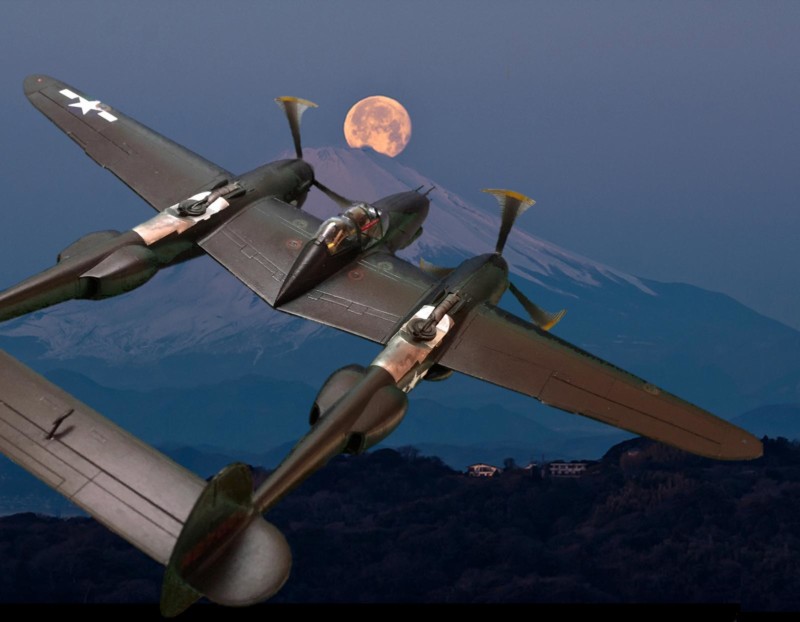
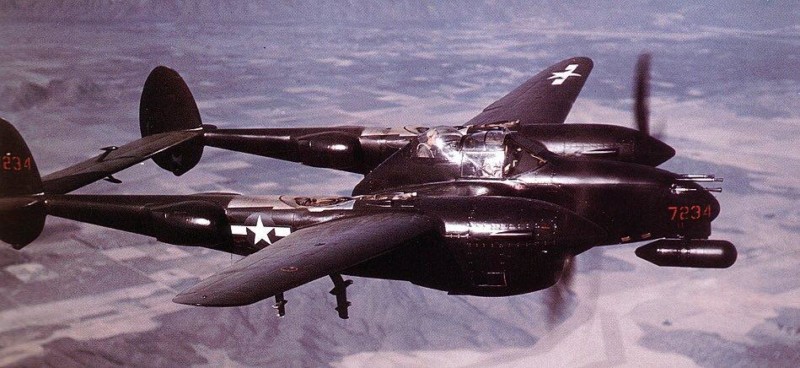

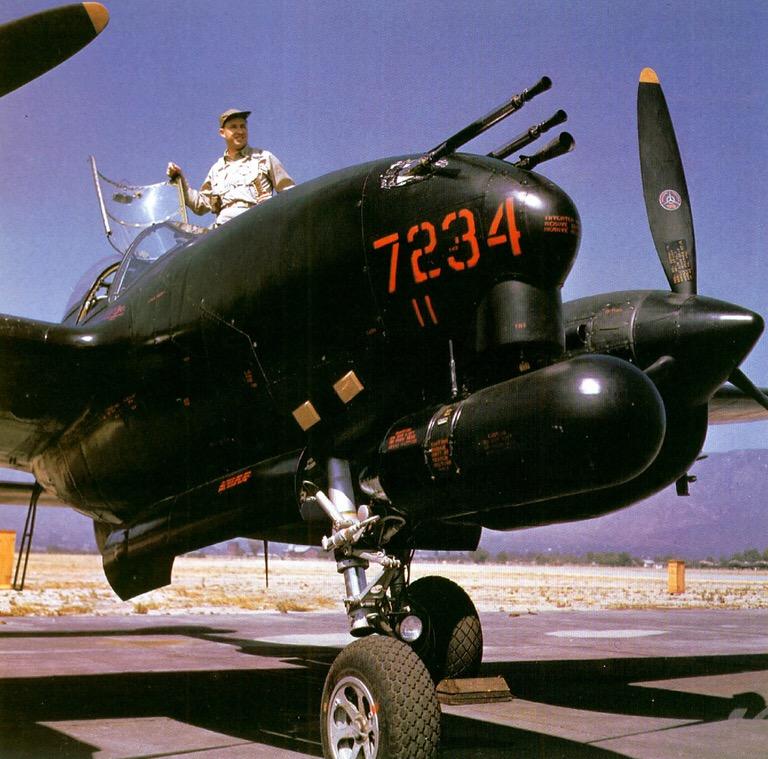
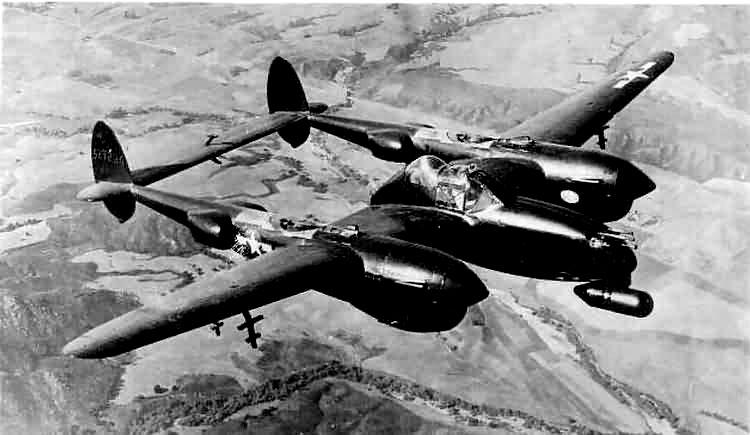
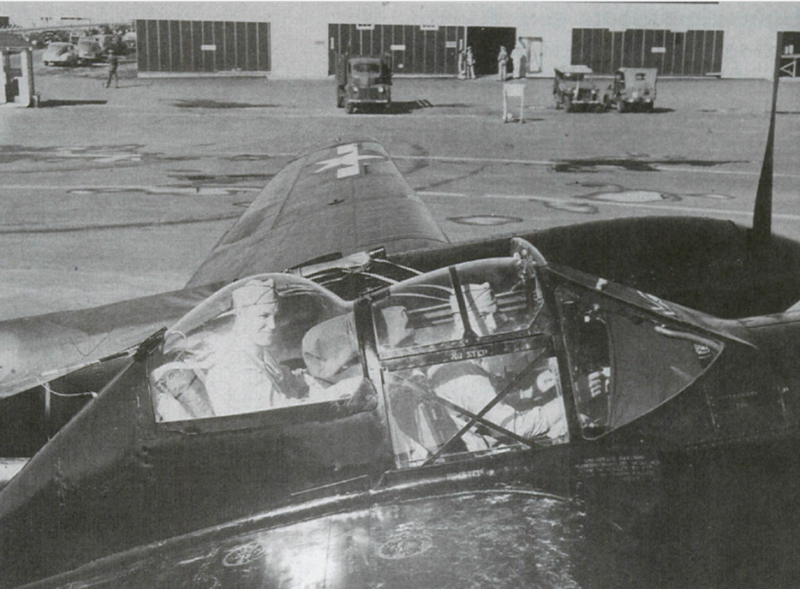
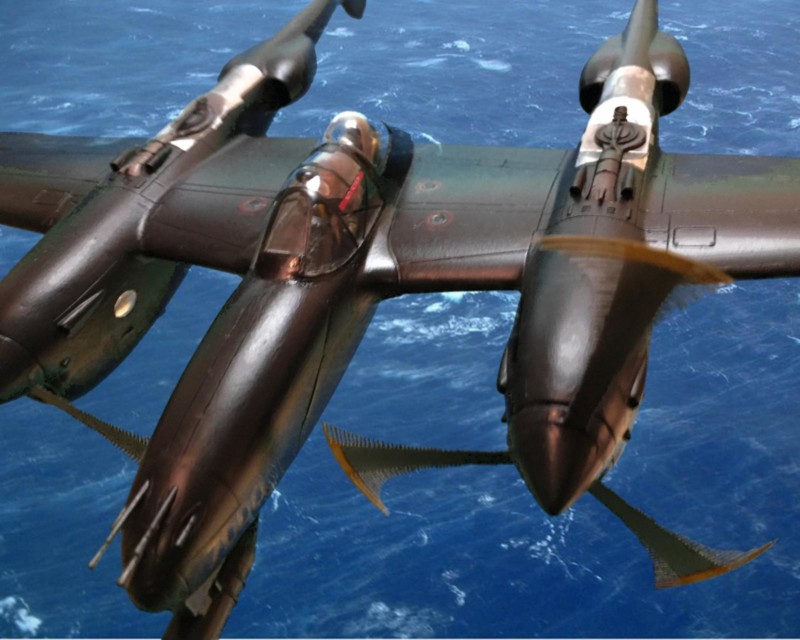
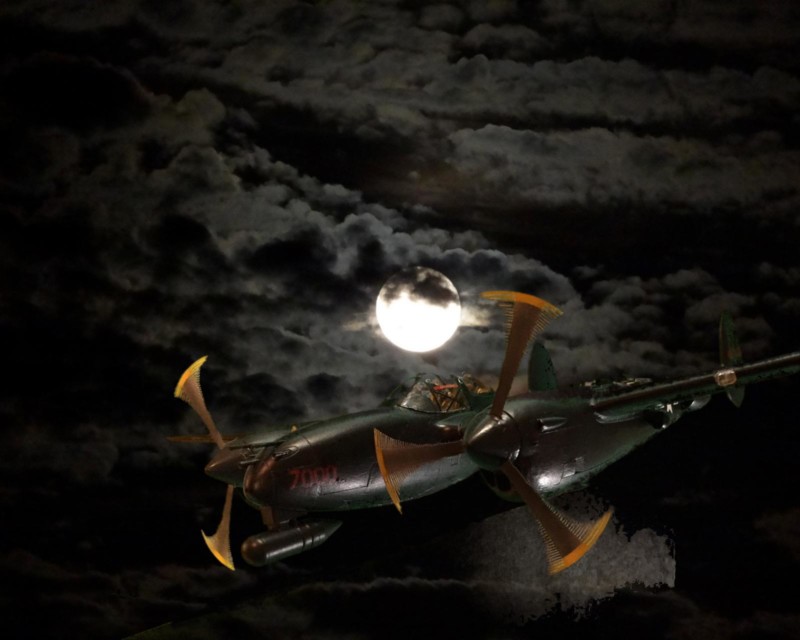
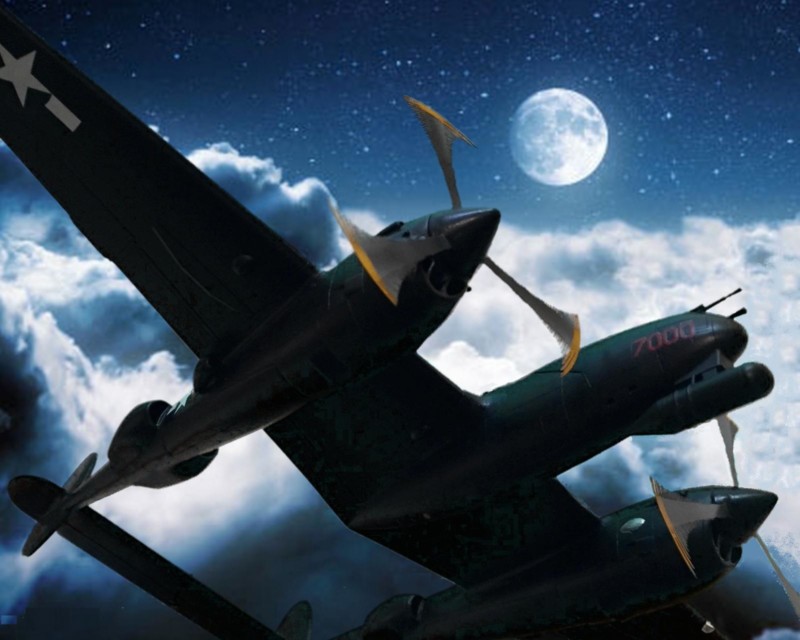
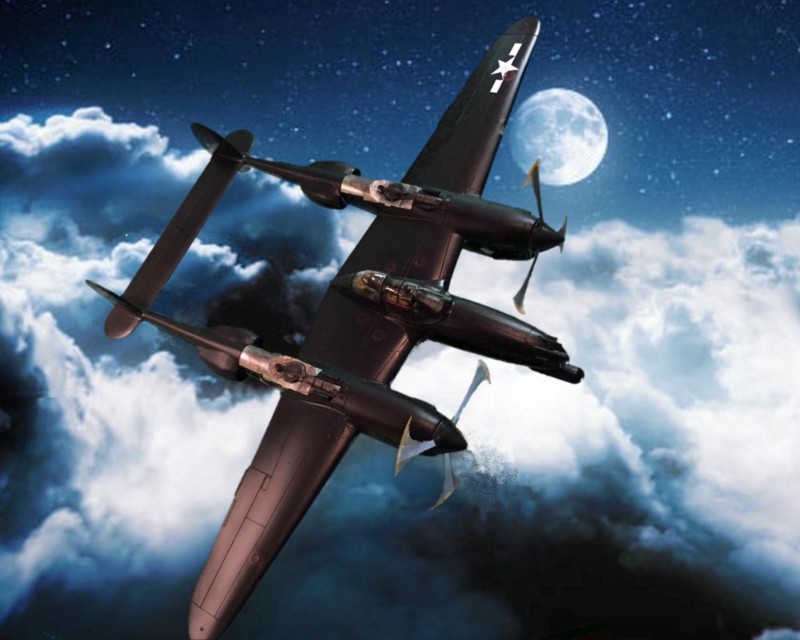
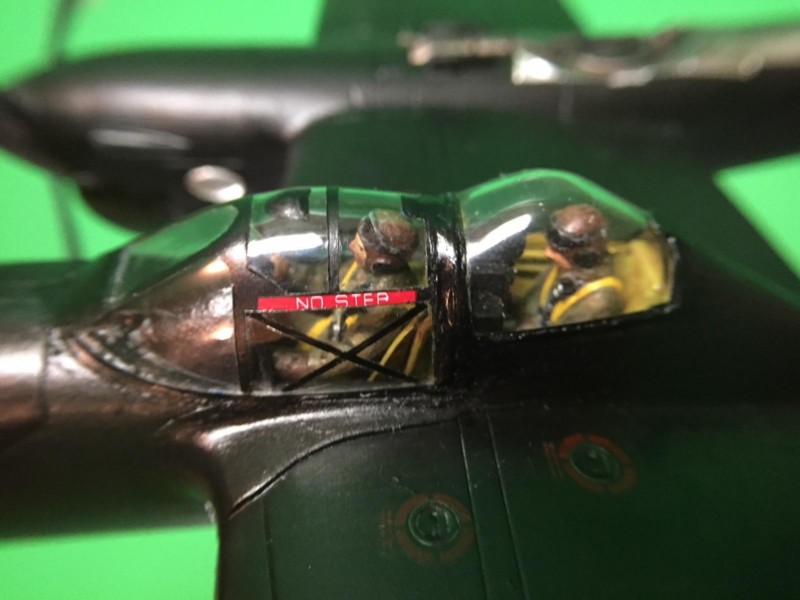
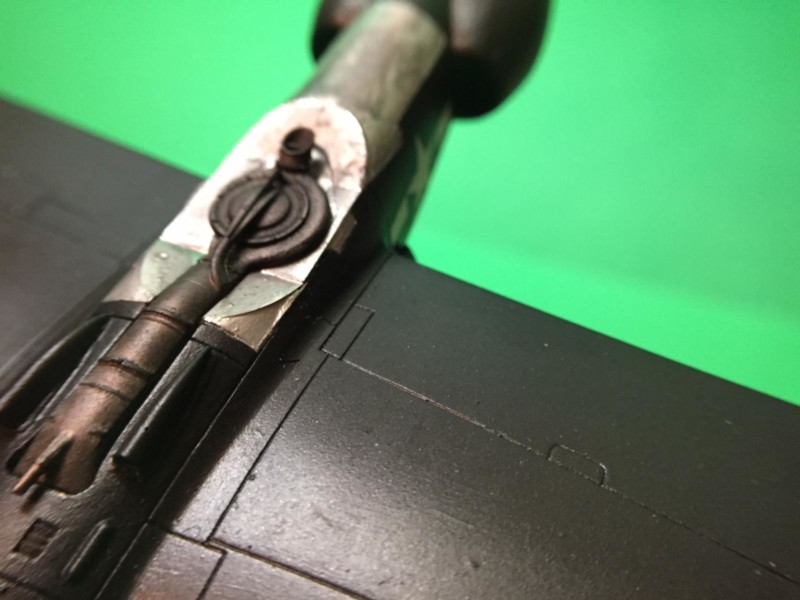

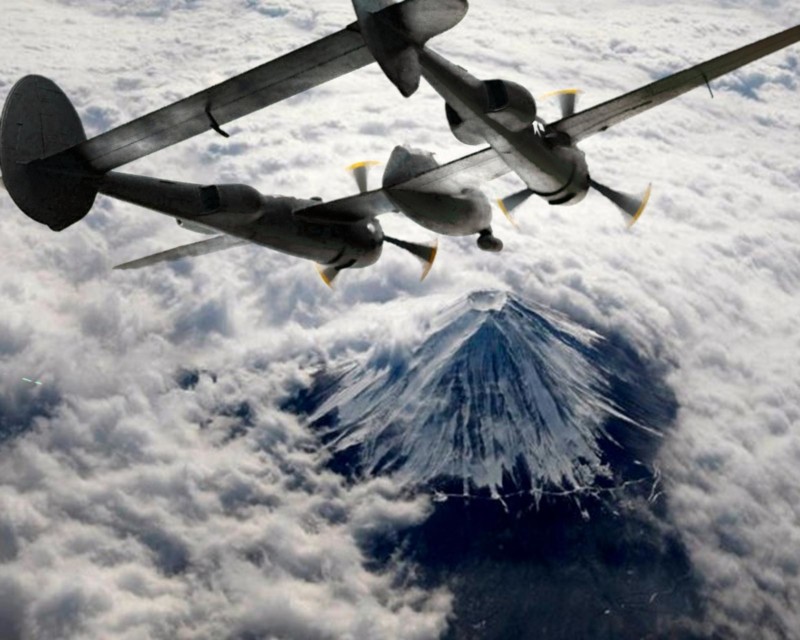
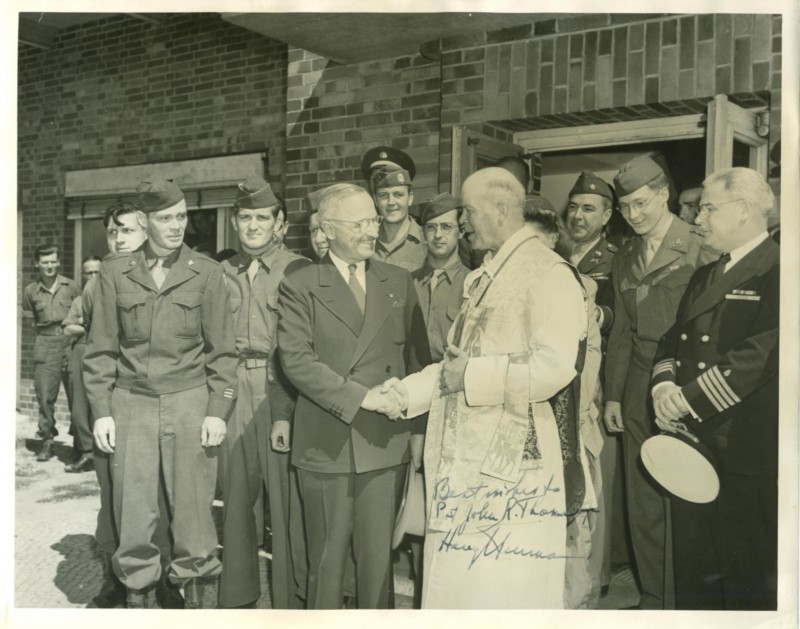
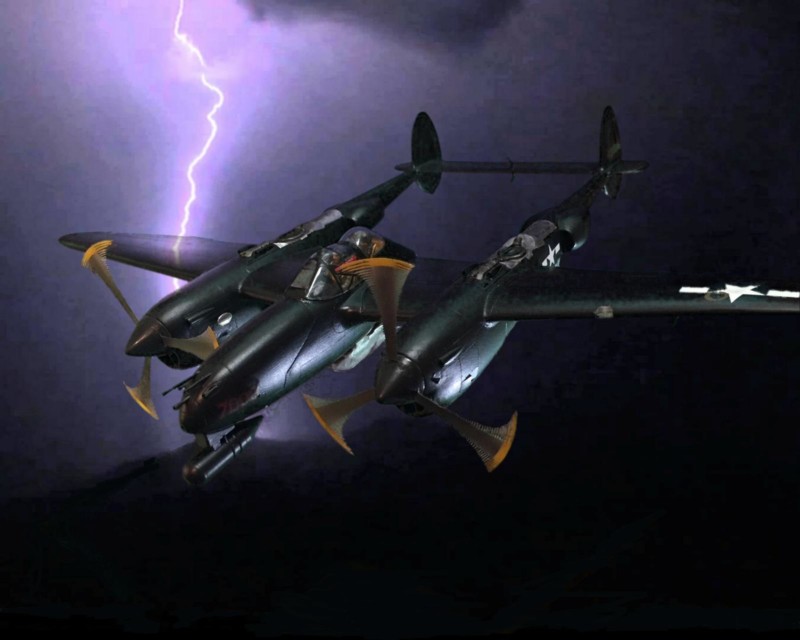
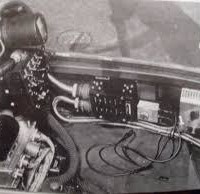
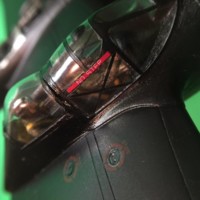
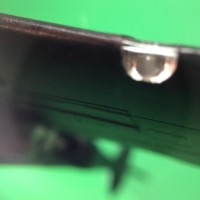
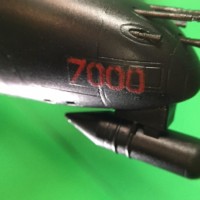
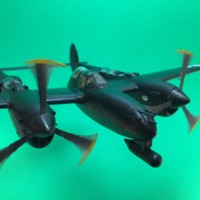
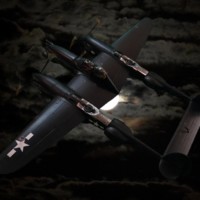
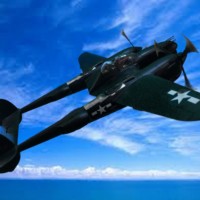
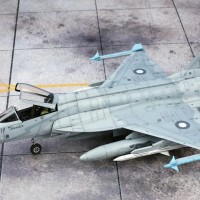

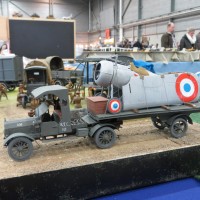
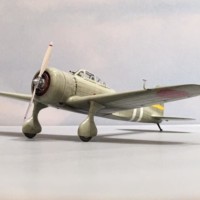
Beautiful work and great story. Truman knew in early July there wasn't going to be an invasion of Japan, having been informed by Admirals Leahy and King of the letter submitted by Admiral Nimitz that the Navy could no longer support an invasion of Japan following the experience of Okinawa. By late July, American intelligence was aware that there were twice as many Japanese divisions on Kyushu as they had expected to fight in November (in actuality, the Japanese were on the island 1:1 with the proposed invasion force). Colonel Wiliam E. Barber, Jr. (at the time a the junior company commander in the 6th Marines) told me in 1996 that when the division landed in Kyushu in September, the officers went to the invasion beach they had been scheduled to land on, with the defenses still intact, and interviewed the Japanese officers they would have fought. "It was our considered opinion that the division would not have gotten off the beach and that an evacuation under fire would have been impossible." By early August, even MacArthur's i****s in his G-2 we forecasting more US casualties in an invasion of Kyushu and Honshu than had been experienced in all of the rest of the war.
However, the bombs did not end the war. What made the Japanese military leaders finally see reason was the Soviet invasion of Manchuria, the same day as the Nagasaki bomb (a true "ironic event" in that Nagasaki had for 300 years been the center of pro-Western anti-Imperial resistance in Japan). They knew the Soviets were ready to invade Hokkaido at the end of August (two months before Operation Olympic) and were unwilling to have Japan under Soviet domination or divided as Germany already was.
Had Truman announced at Potsdam that we would accept maintenance of the Emperor (which we ultimately did anyway) the Japanese would have surrendered the first week of August.
Thanks, Tom. A compliment from you on my work is worth a great deal to me, truly.
I am indeed aware of the many arguments regarding the vagaries of Operation Downfall, anticipated casualties, and the decision to use the Bomb [i.e., was it to test the Bomb(s) after the conclusion was already foregone, or were they really necessary?] The branches were at each others' throats over these issues to the very end, communication with the Japanese was iffy at best, and trying to come up with a simple, linear history is (IMHO) a fool's errand. There is simply no knowing all those details, and, more importantly, that particular atmosphere that had such a powerful effect on decision making, and to pretend that passions (which still run high on the issue for very good reasons) do not color arguments is sheer denial.
(The point probably really is moot for my dad; he was in the 1st Division, the Big Red One, which was cemented in the European Theater at the beginning of May 1945, and it is extremely doubtful he would have seen Japan had the invasion ever happened. My reference is to the thoughts that go through the mind of a world leader when he makes a momentous decision, and Truman quite literally felt that he was living the fulfillment of biblical prophecy.)
I am neither justifying the action nor defending it. For my part, it has to do with the "Forrest Gump Moment" my dad experienced. And even if later generations judge Truman harshly, I believe the man really felt he was doing the right thing by America. We can question his judgment; I am convinced he was as sincere as a commander in chief could be under the circumstances.
Wow! That is truly awesome! Thanks for the kind comment on my post and sharing this with me!
Now that is an amazing account you have there Dave, to go along with the P-38M build. This is one subject I studied when I was in the Navy, reading the reports submitted by all the services in the planning of Operation Downfall. Many decisions, suggestions, yet all pointed to a prolong costly invasion in men, material and dollars that was unacceptable for both sides. There is so much more involved in the decision but reading that your dad was there firsthand is fantastic. What a great story behind the scenes. Many do not know how much deep thought Truman put himself through to carry out the dropping of those bombs. Thanks for sharing that bit of history.
Thanks so much, Chuck. I knew you'd appreciate it as a veteran yourself. And as I said, your build helped inspire me. Best to you, friend.
David, congratulations on a great account - I really enjoyed this read. And a great build too - and that last photo of the Lightning in front of the moon is very well done. Brilliant!
Thanks, Paul. I appreciate you commenting!
I can but only agree with the above general consensus, David. Don't know if it's something I'd opt for in a new addition to any wish list currently, however. Love all those "artwork" pics, however.
Craig, candidly, if you see an Academy 1:48 P-38M coming your way, run. I think it's a bit Freudian all the moon shots with perhaps me thinking of Halloween or something. Yikes!
Excellent article as well as good work with the Nightmare. Understand the green screen back drop, but did you suspend the model or just place it on the screen? Looks really good in flight, really convincing. And by the way the package has arrived, thanks again my friend.
Thanks, Thomas. I used a stand, and photoshopped it out after taking the photos so I'd have a uniform green background for the software to "take." I never photoshopped anything on the model itself. Some shots I actually held the model by the wingtip, though.
You are welcome on the stuff. The Squadron canopy is a mixed bag. Extracting it from the surrounding flash is a real labor, but the fact that you aren't dealing with all those seams makes it worth it. It's perhaps my biggest critique (of many) regarding the Academy kits that (unlike Tamiya) they do not simply include an optional close canopy in the clear sprue.
Great build and great narration. All I can say is that my father was scheduled for the landings as a BAR man with the Army infantry, survival potential ,not to good.
Then we are brothers, Robert. It's goose bump stuff that for all the history book narration, in a very real way this is our story.
Thanks for sharing this story. And oh yeah, nice P-38 too!
This is excellent David. I'm going to need to revisit this post to take it all in when I've got time to appreciate it. Thanks for taking the time to share it.
Much appreciated, Julian.
Fantastic history and story, and I really like your P38 as well. Great posting.
Thanks, George!
Thank you so much David.
What an amazing story David. I knew some of the story an how President Truman made his decision to drop the "Bomb". But actually having a family member present, (especially your very own Dad !), is something spectacular. I'm with Julian on this one. I'll have to re read this article a few times to soak in all of the information you have provided.
Your "Night Lightning" looks great too. I really like everything about this one... Thanks for sharing your family story and your build with us.
PS: I think the night time flying photo shop creations with the moon as a back ground look very cool too ! Especially with Halloween right around the corner...
You're a real friend, Lou, and coming from you the comments mean so much as with all my other model-building brothers here on iModeler.
You take care...
The atmospheric nighttime photos really add to the model. Hard slog with the model-and Academy Lightnings are considered easier than Hasegawa- but it turned out very well. Also, first airplane I've seen done in oils. Long ago I made a P-38M out of the classic Monogram multikit. My first conversation.
Thanks, Bernard! I appreciate your post.
When I was young, the Fathers of most of my friends were WW II veterans. A great many of them told me they were on their way to the Pacific for the invasion of the Home Islands, when the war ended. They were glad that the bombs had stopped that.
Amazing story, and the determination shows up in the final product. Congratulations!
Thanks, Greg. It never seemed to end...
Good stuff David
I appreciate it, George.
Great build and photos that support the model well. I like the spinning prop photo etch that you used. Well done!
Thanks, Morne!
I really enjoyed your well-written narrative, David. Nicely done! Thanks for sharing your family's story with us.
Much appreciated, Bill.
David,
I was just browsing some friends boards and ran across this build which never commented on the first go-round. What a wonderful family story. Don’t get me wrong, the build is great too, but that is a story that speaks volumes to the character of Truman.
Thanks, Matt. I really appreciate it.
Great story David, I seem to have missed it in the main thread... Oh well, stories like this one are timeless anyhow!
Thanks, Michel!
The "rest of the story" is that due to his associations, my dad caught the attention of General John C.H. Lee (https://en.wikipedia.org/wiki/John_C._H._Lee) and was invited for the remainder of his stay in Europe to serve on Lee's staff as an orderly. Dad had some great stories about Lee, who was apparently pretty profane and arrogant. Lee's HQ? The George V Hotel in Paris.
Life is rough!
I am really late to the party on this one. It turned up at the bottom of the headlines page and drew my attention. Speaking of headlines, you really buried the headline on this one, that being, the day my dad had dinner with Harry Truman at Potsdam. In 1946, my dad was part of the occupation force in Japan. If Operation Downfall had been necessary, I imagine his role/ experience would have been markedly different. It is all very interesting stuff I learned from your article and the subsequent comments. And it is a nicely done rendition of the -M night-fighter, with spectacular effects regarding the photography.
Thanks, Russell. Very kind of you!